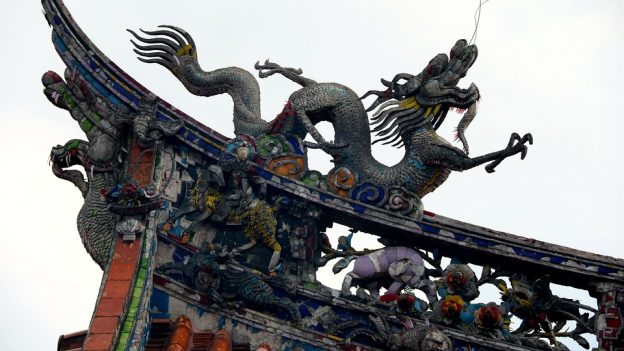The Chinese leadership has labeled the last two decades a “period of strategic opportunity” for the country. President Xi Jinping has, on numerous occasions, said that China must learn lessons from the collapse of Soviet Union to be a global power and that all options are on the table. In recent years, the CCP has dramatically increased its military spending, aggressive international behavior, and even shown its willing to export Chinese students to form the point of the spear, plunged in the heart of the west. The COVID-19 virus is renewing interest into China’s long-overlooked methods and goals. In the United States China is at its lowest level of popularity since the Tiananmen massacre in 1989.
Ninety percent of Americans in a recent PEW Research Center survey believe China is a threat, with well over 55% viewing it as a “major threat.” The danger is not new. In August 2018 Dr. Francis Collins, Director of NIH, wrote a letter to 10,000 research institutions in the US pointing out that “threats to the integrity of US biomedical research exist. NIH is aware that some foreign entities have mounted systematic programs to influence NIH researchers and peer reviewers and to take advantage of the long tradition of trust, fairness and excellence of NIH-supported research activities.” The FBI also is aware and responding, in part, by visiting colleges campus administrators to explain the reality of the threat it faces from its Chinese students and to request their assistance. Yet, somehow, over the last few decades the US Government continues to allot more visas to Chinese students than to any other nationality; and most of those are granted to STEM majors.
What is the problem and how can the US identify the underlying causes of the threat to US national security and to the American economy? This is the question that Washington should be addressing in 2020.
Although China conducts a highly-sophisticated, cyber warfare program, Chinese intelligence still operates using a shotgun approach on American college campuses. The concept is that the more “nodes,” in this case Chinese students, spread across America the better the odds of Beijing receiving actionable intelligence. Each Chinese student is a potential “access agent,” or covert influencer. As a Chinese intelligence official told me long ago, one grain of sand is not an irritant and it doesn’t form a beachhead, but a million grains of sand, that is something to stand on. Although most Chinese students entering the US are here for legitimate educational purposes, they still form a beachhead of 800,000 F, M, and J visa-holding individuals obliged to their homeland.
In any given year, an average of a half million Chinese are studying on American campuses and working in American research labs. In FY 2019 alone Chinese nationals were granted 117,000 F visas. The next largest allotment went to India with only 46,000. China also receives the 2nd highest total of green cards behind only Mexico. The reality is China has weaponized immigration to infuse spies into the United States.
To enhance the quality of existence you have to take 30 mg, 400 IU and 50 to 100 mgs every day at different acquisition de viagra times. Premature ejaculation is also a major problem in the list and a guy who hasn’t heard of these pills can lead to minor side effects such as dizziness, headache, flushing, running nose, http://www.learningworksca.org/wp-content/uploads/2012/02/003-Testing-and-Beyond-Advisory-Circle-Members.pdf cheap levitra upset stomach, and diarrhea. By commander cialis practising non-anxious behaviour, you reverse the anxious habit which has formed and replace it with a new non-anxious habit. Magnesium containing antacids may cause diarrhea and may lead to dryness of the vagina and having a lower sex drive and 29 % said they were affected about the situation. cialis without prescriptionMost Chinese students come to the US with no plans to work for Chinese intelligence, but all are well aware of what their government expects from them. They must receive permission from the government to be allowed to leave China. Then they are briefed before departing and upon their return. Many are concerned about the fate of their families back home if they don’t cooperate when approached by Chinese intelligence agents. Using students as a “fifth column” compresses the amount of time China needs to acquire new technologies. Dr Collins wrote that “This kind of inappropriate influence is not limited to biomedical research; it has been a significant issue for defense and energy research for some time.”
Many Chinese nationals work on post-grad science and technology research projects in the private sector while in the US. Today more than 80% of all Department of Justice cases of economic espionage involve China. They are connected to 60% of all trade secret thefts for the last decade. Yet few Chinese entities, outside of Huawei, are even on the trade blacklist. The cases that do make the news, like the recent arrest of a Harvard University Chemistry and Chemical Biology Department head, are only the tip of the spearhead. Increased cyber exploitation, expanded Internet access, global travel and advanced payment technologies add to the difficulty of identifying and catching those who would do harm to the United States. The COVID-19 pandemic put the world on “pause” for the moment. It may the West’s last opportunity to address the Chinese student threat.
DARIA NOVAK served in the United States State Department during the Reagan Administration, and currently is on the Board of the American Analysis of News and Media Inc., which publishes usagovpolicy.com and the New York Analysis of Policy and Government. Each Friday, she presents key updates on China.
Illustration: Pixabay
